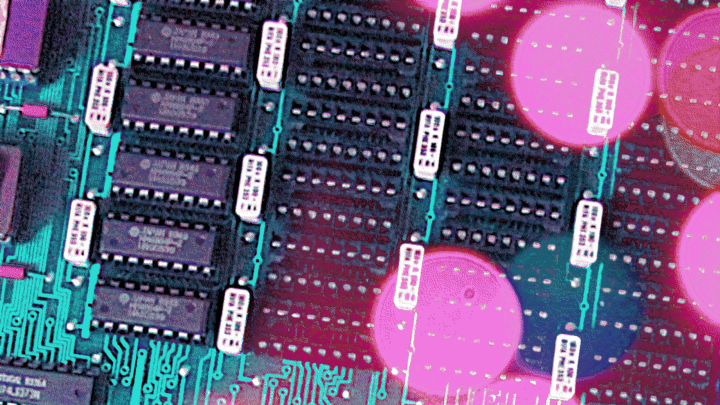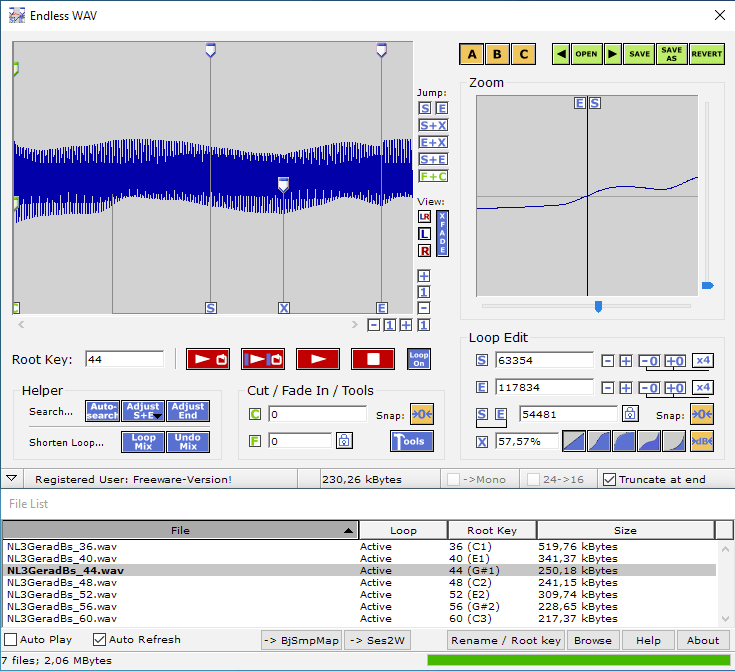5 Ingenious Ways Synth-makers Saved Memory
US Efficiency in days where RAM/ROM was pricy! 26/04/24

|
RAM chips used to cost an arm and a leg. I'm a vintage computer enthusiast, so turned to an old copy of Acorn User Magazine to find exact figures:
In 1984, the July edition of Acorn User featured a 128KB RAM expansion board, using 64Kbit DRAM chips, for £40 - that's roughly £125 in modern money. From various bits of dry research, I found that mask ROM prices (for storing permanent samples) were in a similar ballpark - though requiring significant development costs & wholesale buying clout.
128KB ain't squat when it comes to sampling time (<6 secs at 8-bit 22Khz) and although prices did come down a little during the late 80's and early 90's, most ROM-based instruments of this era had from 1-8MB of ROM max!
1. Clever Looping and Sound Shaping
Tasked with trying to fit a whole sound world of samples into a machine (in order to feed a minimum of 127 factory patches), sound design teams got pretty crafty when it came to looping samples. By searching for zero crossings within the samples, and making use of baked-in cross-fade looping, string and choir sounds could sustain smoothly, without clicks. Looping as soon as possible into the sample meant that precious memory could be saved.
The use of these tools on decaying tones (ie piano) would, of course, sound unnatural - an infinitely sustaining piano hum - but by shaping these samples with VCA/VCF envelopes and velocity, you could approach an expressive piano tone.
I have no doubt in my mind that teams at big companies had proprietary tools available, but if you'd like to try your hand at making your own seamless loops these days, then I can recommend Endless WAV, which gives you a bunch of looping options.

Why would you do this? Perhaps to load your vintage Akai S700 or Korg DSS1 with fresh custom sounds, or even the Waldorf M, which can load in 64Kb samples. What a luxurious amount of space, huh?
2. PCMCIA Expansion Cards
Often, a manufacturer would supplement their factory ROM set with expansion cards. These varied in size from 256Kb to 2MB at the time (Later Roland SRX Expansions came on a custom PCB with a whopping 64MB!) and positively, they often focused in on a certain theme or genre, rather than being a bread & butter collection. My favourite demo of the era is the 01/W's "Robot World" from the 805 Synth Design PCM Card, Around 4:20 is really my jam.
3. Sample Companding
1994's 8MB (wow!) Roland JV-1080 squeezed a huge variety of usable waveforms in. According to sound designer Eric Persing, there was some magic to how this was done:
The chip that the 1080 uses is only 8-bit, 30k sample rate companded samples, with LOTS of tricks to hype it up, so it has a really unique sound. The 5080 is actually 44.1k sample rate samples (but still companded).
The 700 series are the only samplers of that era to be truly 16-bit linear, 44.1k samplers.
The exact technical details are lost to time, but Don Solaris mused in his ultimate Roland JV, JD, XV FAQ:
It seems that Roland modules, all up until recently with the 2019 Fantoms, use DPCM compression type which downscales the data into 8 bit by a process of differential pulse-code modulation. This is a signal encoder...based on the prediction of the samples of the signal in two possible ways: 1) Take the values of two consecutive samples, quantize them, calculate the difference between the first one and the next, the output is the difference. 2) Take the difference relative to the output of a local model of the decoder process and quantize it. Compression ratios on the order of 2 to 4 can be achieved this way.
The question now arises: does that make Super JV and JD series 8-bit machines? Well technically speaking no. These are not just plain 8 bit samples in the ROM but 8-bit compressed samples. It makes a difference, because prior to being played, their dynamic range is restored and expanded to 16 bit. I haven't meet a person that doesn't like the sound of Super JV series and they would hardly believe these originate from 8 bit samples – but in a way, they do. In this regard we can also assume when Eric Persing mentioned the "companding" compression he was referring to DPCM, since the data is actually compressed into 8 bit and then later expanded into 16 bit (realtime using dedicated DSP hardware).
4. Variable Sample Rates
So yes, sometimes manufacturers would decide that 44.1Khz wasn't actually required for their synth. The 6MB Korg 01/W has a reported sample rate of 32khz, and this, alongside it's Korg A1-based effects processing, afforded the instrument a luscious, dark sound, plus saved some memory in the process.
The 01/W is a cinematic monster by the way, check out this demo:
Conversely, the younger Korg X3 (which lost the 01W's waveshaping fun, boo!) crammed 340 waveforms into it's 6MB, compared to the 01W's 254.How? Korg simply decided to provide some samples of lower quality. Some waveforms really suffer when downsampled (cymbals, bright guitars, etc) but some survive the conversion fine - perhaps pickup up a desirable grungy vibe. Still, don't buy an X3, buy an 01/W!
5. Proprietary Systems & Analogue Processing
Finally, let's talk about the the amazing Kurzweil 250 - a serious feat of engineering in 1984. Not many specifics are known about how Kurzweil crammed a convincing grand piano (and several other instruments!) into a machine of such limited memory. I couldn't find a definitive wave-ROM size online - but the user sampling option maxed out at 4MB, so let's assume it's around the same.
From what I watched and read, Kurzweil used the following:
- An ear for figuring out which samples of instrumental performances might work well in a limited space,
- A proprietary system called "Contoured Sound Modeling" which may have relied on the use of computers to work out the similar tones between samples - reducing redundancy,
- 10-bit companding to reduce file size
- Analogue processing via a CEM 3335 VCA - to increase the dynamic range of these companded samples, and "fade out" decaying sounds before any unnatural quantisation noise creeps in.
Bob Moog commented:
Yeah, it's a proprietary scheme... and 'proprietary' is a polite word for "we're not going to tell you what it is!" It is a very complex, elaborate software, a set of programs that are used to compress the data of a series of sounds, so that we can get it into a reasonable amount of memory. If we took just raw sounds and digitized them -- every sound, every key on the piano is different, for instance. And within one key, every level of dynamics has a different waveform. It's just not that it's louder, the whole waveform changes.
Electronic Sound Maker - 1985
Check out this great video on the K250:
Thanks for reading; next time you play a multi-gigabyte piano sample, spare a moment to think about how far we've come!
Posted by MagicalSynthAdventure an expert in synthesis technology from last Century and Amiga enthusiast.
< More From: MISCELLANEOUS
- 4 Software Synths that Became Hardware! 02-May-24
- The Tunes in Tokyo Train Stations 30-Apr-24
- 3 of the Synth World's Most Outrageous Easter Eggs! 23-Apr-24
- 5 Firmware Updates that Totally Changed the Game 09-Apr-24
- Computer Music Chronicles, The 80's: Acorn Music 500 Synthesizer 16-Feb-24
Even more news...
Want Our Newsletter?
More...
Revisions that turned synths into brand new machines






